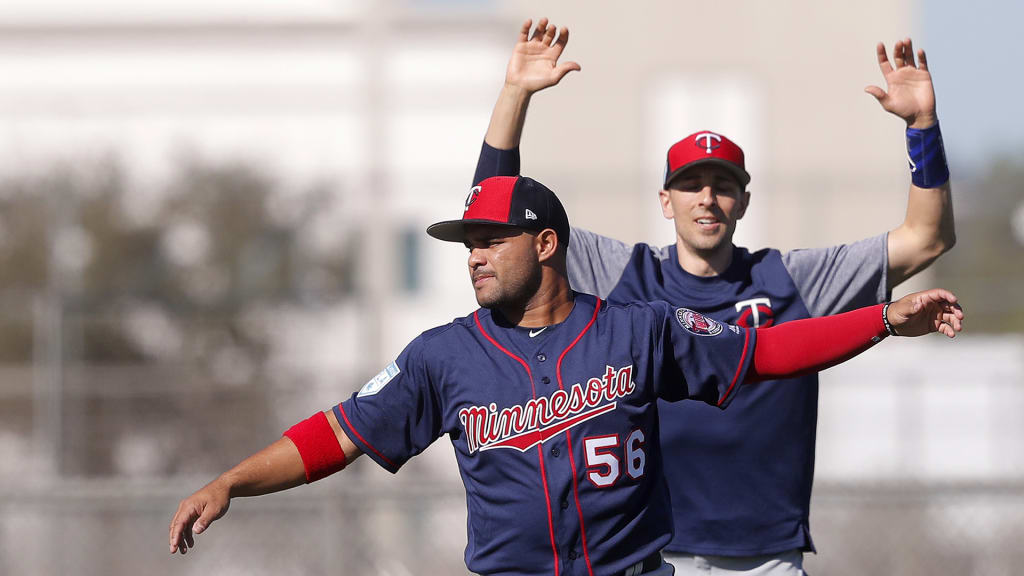
FORT MYERS, Fla. -- Twins catchers have spent plenty of time this spring crouched in one corner of the home bullpen at Hammond Stadium, nestled under an elevated walkway on the third-base side of the ballpark. Sometimes, their arms are restrained by resistance bands. Sometimes, they have their mitts on; sometimes, they don't.
That's what Minor League catching coordinator Tanner Swanson's pitch framing and receiving program looks like, as the Twins are looking to develop those skills with an organized program at Major League camp for the first time early this spring.
"I think the industry has understood for a long time the value of receiving and pitch framing relative to other things that catchers have to do," Swanson said. "I don't know if the industry has been that in tune to how you can optimize these things."
Swanson certainly doesn't claim to have all of the answers in the still fledgling field, but he has developed an evolving program through years of experimentation during his time with the University of Washington, Santa Clara University and now the Twins. This spring, those drills have included receiving different kinds of pitches from pitching machines, using bare hands to frame gently tossed weighted balls and using resistance bands to reinforce certain movements.
Broadly speaking, Swanson's program takes into account various elements of successful receiving and pitch presentation, including the positioning of catchers' bodies and accommodating certain backstops' strengths in the strike zone.
The Twins didn't have a roving catching coordinator prior to Swanson, who was hired in November of 2017. He began implementing his program in the Minor Leagues last season -- prospect Ben Rortvedt remembers waking up at 6 a.m. last spring for early catching work -- and players soon began to internalize the relative importance of framing in addition to more traditional catching skills.
"[The data] was really cool, and that was really eye-opening," said Rortvedt, who finished the season with Class A Advanced Fort Myers. "That's when it clicked in my head that this should be the sole focus."
Even having arrived from the notably forward-thinking Astros organization, starting catcher Jason Castro said that some of the concepts, including the resistance training and elements of catcher positioning, were more new to him.
"Some of the ways to think about that are new, and there's a lot more data showing that if you can position yourself in a certain way, it allows you to be able to smooth your catching of the ball," Castro said. "Some of those things that we're implementing are good, and I'm glad to see them kind of happen on a larger scale with everybody involved."
Swanson is excited to not only have access to the greater resources of professional baseball, but also to the front-office personnel within the Twins' organization that have pushed and challenged him to think differently about many elements of his work. While he thinks modern catcher development has noticeably lagged behind similar coaching for pitching and hitting, he feels that the understanding of framing as a teachable skill is set to take off in baseball.
"This is in the infancy stages and I don't claim to be a pioneer in any way, shape or form," Swanson said. "But we're trying to push the envelope and figure out how we can learn and how we can enhance our ability to teach this thing."
"I feel like the Twins are at the top of the game right now," Rortvedt said. "It's really awesome."
